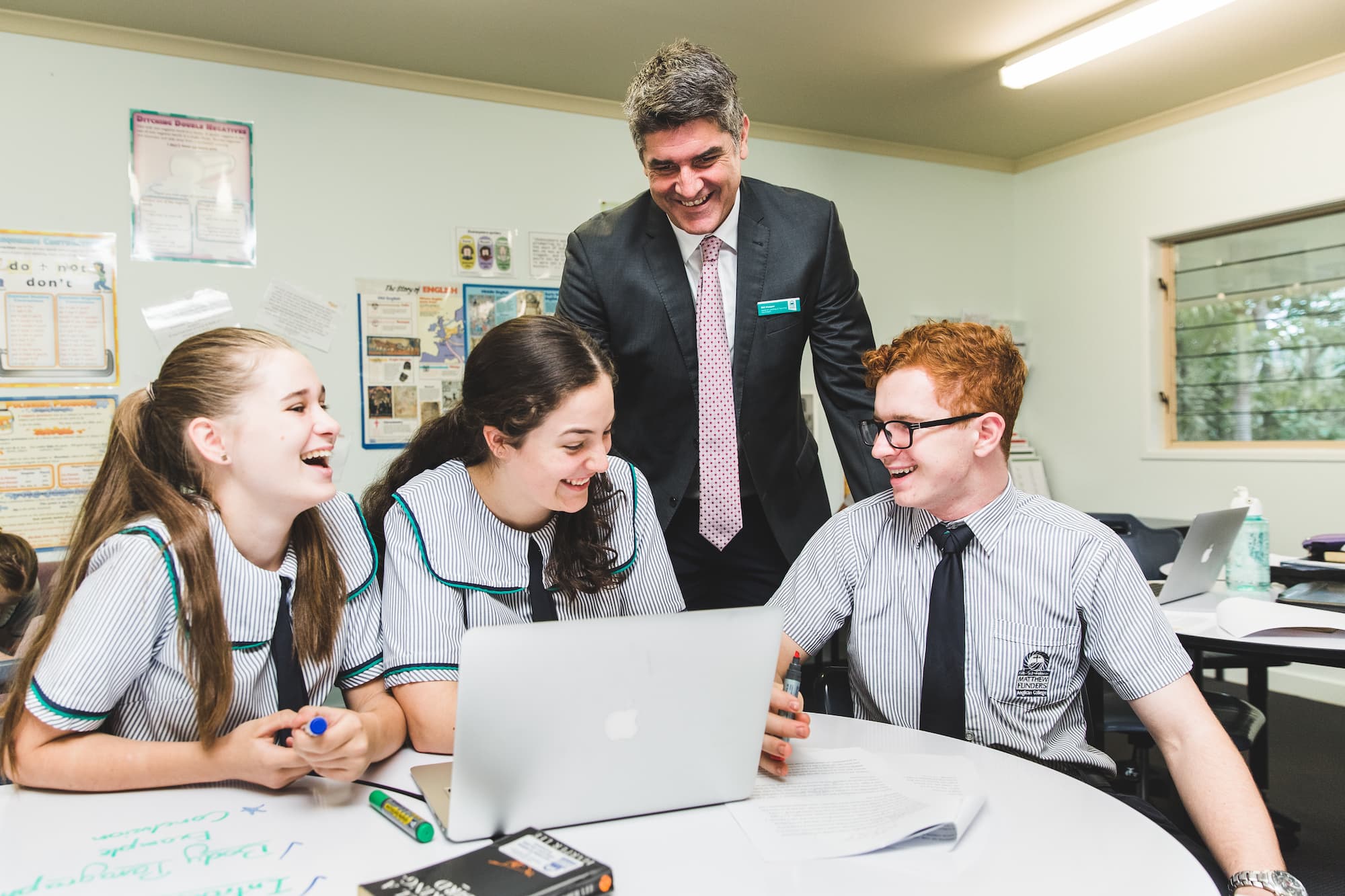There’s good news from Deloitte’s latest report in the firm’s ‘Building the Lucky Country’ series – robots are not taking over!
The seventh edition in the series entitled, 'The path to prosperity: Why the future of work is human' makes a compelling case that, despite the threat that technology poses to some sections of the workforce, particularly those involving routine and repetitive tasks, the future of work will be human.
Robotics’ failing is that it is essentially limited to automation and augmentation of simple, manual tasks not creation; the latter being a skill that is intrinsically human. For now, sentient computers like the deranged Hal 9000, Terminators and Blade Runners will, thankfully, remain the stuff of science fiction.
Beyond the offer of solace to those anxious about the future of the workforce, the report also offers some timely food for thought for our Year 12’s currently submitting their preferences to QTAC and our Year 10’s who select their subjects for Senior this term. When thinking about the sustainability of a future career, students need to understand that it is the interpersonal and creative roles that will be hardest of all to mechanise.
Deloitte Access Economics partner, David Rumbans makes the point that, “jobs increasingly need us to use our hearts – the interpersonal and creative roles, with uniquely human skills like creativity, customer service, care for others, and collaboration that are the hardest to mechanise”.
He backs up this statement with some interesting statistics;
• 86% of the jobs created between now and 2030 will be knowledge-worker jobs
• By 2030, 25% of Australia’s workforce will be professionals. Most of these will be in business services, health, education or engineering.
• 66% of jobs will be soft-skill intensive by 2030.
Rumbans’ description of these skills as ‘soft’ is particularly comforting to me as I was promptly rebuked by ISQ’s Executive Officer for Curriculum and Assessment, Jenene Rosser, when I used the same adjective in an introduction to her keynote address to staff at Flinders a couple of years ago. In hindsight, Rosser’s not-too-subtle slap down was well-deserved as these ‘soft’ skills are indeed hard skills to develop in young people; as hard as teaching algebra or grammar. It’s also hard amidst the noise and potentially reductionist pressure of ATAR scores and NAPLAN results to find space within the curriculum to give these skills the prominence they deserve.
In 2016, Flinders adopted Michael Fullan’s distilment of 21st century skills into six Cs; Critical Thinking, Creativity, Communication, Character, Citizenship and Collaboration as a focus for our P-12 curriculum. The chronological development of these skills was mapped on a continuum and then curriculum leaders and classroom teachers were encouraged to make sense of them in the context of their own subjects. We stressed the importance of context, that critical thinking rightly looks different in a maths class compared to a science class. It’s a point that British educationalist, Dylan Wiliam, makes clear, “the development of these 21st century skills requires strong disciplinary foundations, generated through significant amounts of enculturation in the domain”.
One subject area which has embraced the six Cs as the centrepiece of its curriculum and approach to teaching and learning is IDEAS (Innovation, Design, Engineering, Art and Science). Introduced at the start of the 2019 academic year, IDEAS is a compulsory multi-disciplinary course in which Year 7 and 8 students employ a human-centred design process to find solutions to real-world problems.
In one IDEAS project, students grapple with the issue of sustainability and micro-plastics in the environment by developing ‘nude food’ solutions for school lunches, including packaging made from a single, easily recycled material that does not exacerbate pollution. Students then develop an infographic with Virtual Reality capabilities to visually represent their solution.
Driven by ‘big-picture’ design questions like, ‘How might we help inspire global audiences to take action to reduce plastic waste?’ and ‘How can visual messaging and practical hands-on examples become empowering tools in reducing plastic waste?’, these projects demand that students collaborate and think critically. But the thing that sets IDEAS apart from traditional STEM approaches is the need for students to empathise.
IDEAS projects begin with students ‘walking in the shoes’ of a person or group who is directly impacted by the problem being solved. Students are encouraged to put aside their biases and beliefs to try to develop a heightened awareness of other people’s needs, wants and motivations. This can often involve interviewing or observing people to get a detailed sense of the specific impacts that the problem is having. Once this is achieved, students begin the process of ideation, definition, prototyping and testing.
IDEAS is not just about making things; it’s about providing opportunities for a student to participate as a citizen of a community and develop their character through the experience. It’s the perfect combination of academic rigour and personal development driven by values and, for our students, it captures the future-proofing shift that the Deloitte’s report is calling for: from hands...to heads…to hearts.
Bill Hooper | Head of Curriculum

